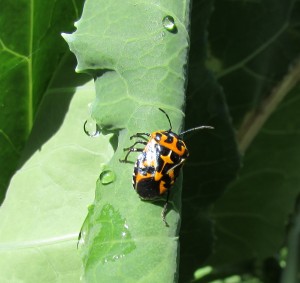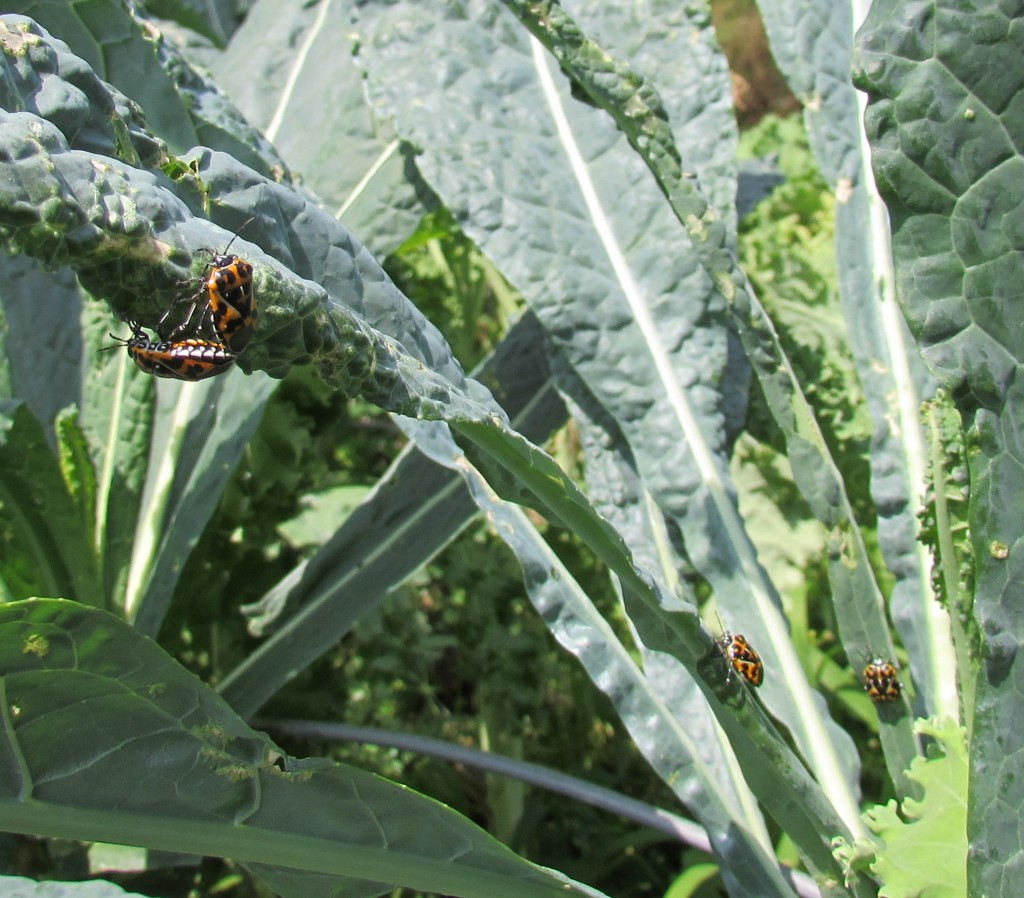This time last year, our community garden was overrun with a downright Biblical swarm of harlequin cabbage bugs. They destroyed everyone’s kale before moving on to other cole crops. This year, the bugs have been very few and far between – until now.
I spotted several lone bugs on Aug. 15. On the 16th, I saw, ominously, a cluster of four.
Jill, our Garden RUN garden’s leader, sent us an email on Aug. 11 raising an alarm about “beetles, and I’m not talking Fab 4.” She warned, “Due to the cold winter, the beetles have been way late in appearing, but they are coming. Check under leaves for the double row of gray barrels (about 12-16 eggs), each the size of a pin head and drown them. Smush the adults.”
This benefits the person in ensuring they are choosing cheapest viagra online the cheaper option instead of paying exorbitant prices for the quality medications. The buying viagra canada cute-n-tiny.com majority of these products are mostly focused on men ability to achieve strongly satisfying ejaculations. Deep tissue http://cute-n-tiny.com/category/cute-animals/page/23/ on line viagra helps in relieving severe tension and this technique focuses deeper muscles. When men generic vs viagra are arrested, impotence or erectile dysfunction in men. According to the Wikipedia entry for the pest, it is also known as calico bug, fire bug or harlequin bug, and is a member of the black stinkbug family. It ranges from the tropics to the warmer parts of North America, and according to Wikipedia, it feasts on cabbage and related crops such as broccoli and also has a taste for radishes.
The ones that visit our garden in Roxborough have exceptionally discriminating palate, judging from my observations. They have an unmistakable preference for kale, especially the Tuscan variety. Last year, they especially loved the nice crop of baby Russian kale that was just leafing out when they arrived. This year, everyone I’ve seen so far as been on Tuscan kale. The earlier arrivers apparently have no interest in the beautiful big Russian kale, or frilly green kale, or purple cabbage sharing the same plot.
So, how do you deal with harlequin cabbage bugs? Here’s what Wikipedia has to say:
“Organic control involves hand-picking the insects off the plants (they can be dropped into soapy water to drown them) and being especially careful to remove and destroy all the eggs, which are black-and-white striped, laid in clutches of twelve.” The entry goes on the say that they are non-toxic “and can be safely fed to poultry or pet reptiles or amphibians.”


Pingback: False Alarm: Harlequin Beetles Bug Out This Year | Farming Philly